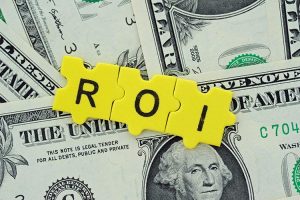College Degree Return On Investment (ROI)
 The core purpose of a college degree is to improve a scholar and boost future earning potential. A degree is an investment in money and in time. To make sure it's a good investment, let's examine the term and see how it applies to education.
The core purpose of a college degree is to improve a scholar and boost future earning potential. A degree is an investment in money and in time. To make sure it's a good investment, let's examine the term and see how it applies to education.
Exactly What is ROI?
Calculating ROI for a college degree is not as simple as for other types of investment, such as buying a share of a business or a mutual plan. That's because it's tough to track the growth of the investment over time and it's also hard to say how much the investment in college education contributes directly to any gains.
Another factor that makes ROI calculation tricky is that time, work, and emotional investment can't be easily quantified, compared to other sorts of investment.
On the simplest level, the return on investment could compare income versus the cost of the degree and student debt. The problem with this approach is that it won't take into consideration the subtleties of student loan debt and it ignores other non-cash benefits that come from a good career. Some people want to understand only what their projected starting income will be, while others want a better measure of long-term satisfaction. This simple income vs. cost approach won't satisfy either need!
It's also worth noting that paying for a college degree involves investment from many quarters. Chris Maples is president of the Oregon Institute of Technology. He points out that in addition to the scholar, other investors include family, foundations that provide grants, bursaries, and scholarships, the government, and the institutions, themselves. So the bigger picture of college degree return on investment should include the benefits that accrue to these other investors. After all, grant and scholarship organizations, as well as college admittance officers will have slightly different measures of success than the individual student will.
Finding College Degree ROI Information
Not only is college degree return on investment a complex calculation, it's an important one for prospective students and investors. 70% of graduating college seniors will bear an average student loan debt of $29,400. Regardless of the other factors detailed above, if that newly minted graduate cannot make enough to pay off the loan, then it's a bad investment.
Fortunately, there is a website designed to help people learn what the current compensation is for various markets. Payscale.com surveys millions of employees to get an accurate picture of a given school versus the salary levels of its graduates. It breaks down the data into categories including:
- cost – Tuition and other fees, as well as living expenses to complete a 4-year degree.
- 30 year net ROI – The total earnings of an individual over 30 years less the total tuition cost of the school.
- 30 year ROI with aid – This total subtracts the net college cost from the 30-year earnings.
- percentage of students receiving financial aid – This figure includes loans, grants, scholarships, and other monetary benefits used to finance education.
- average aid amount – This calculated total divides all aid by the number of students receiving aid.
These ranking offer surprising insights, as some no-frills public colleges can offer a higher ROI than an ivy-league university.
Remember that, practically, college degree ROI is always “in the eye of the beholder.” That is, only the scholar can decide what will be a successful outcome, considering investment of time, money, and debt-load, as well as what benefits will come from the experience. Using resources like Payscale.com just helps provide some much-needed real numbers to the equation.
